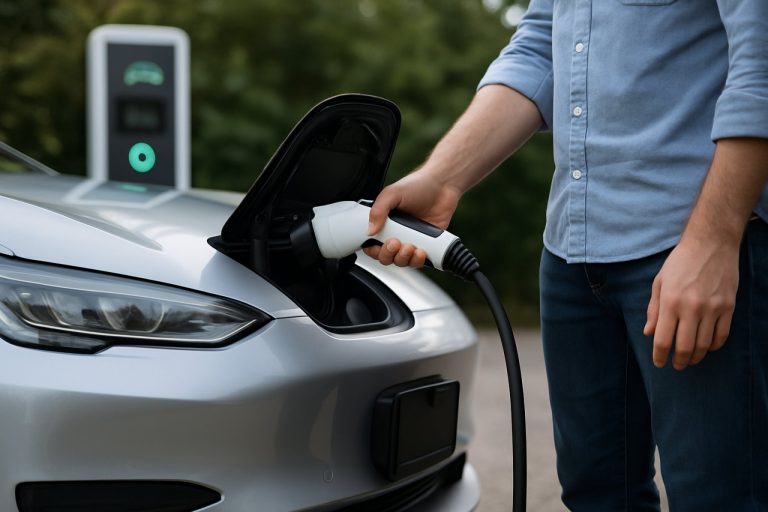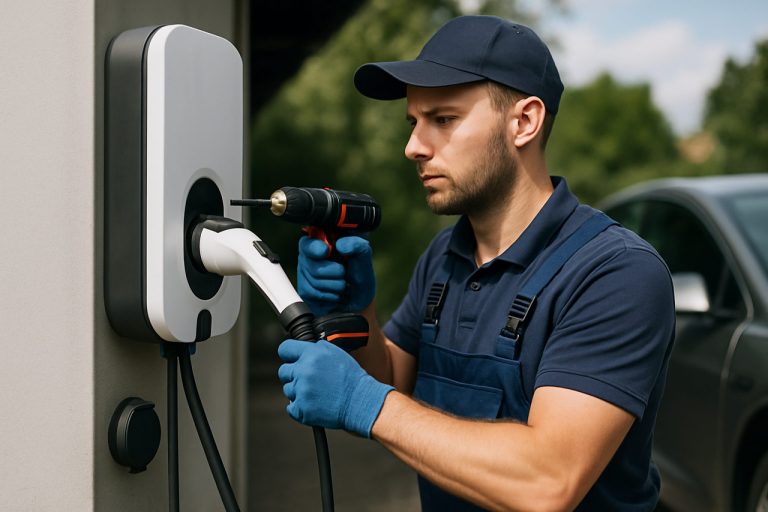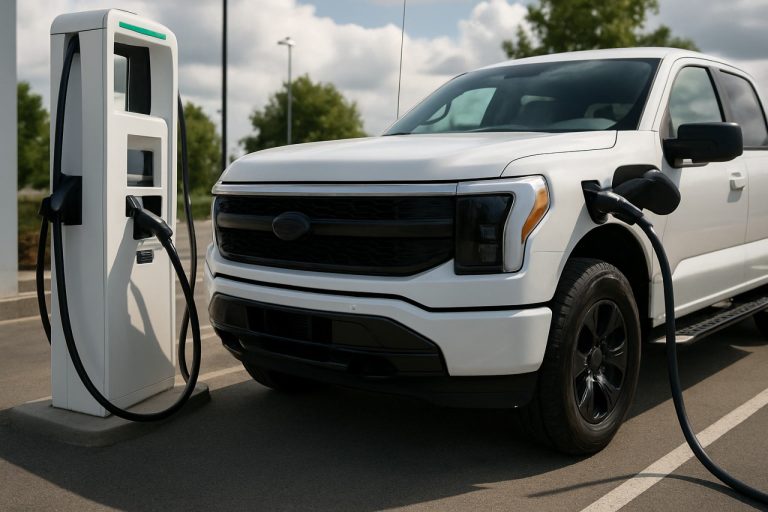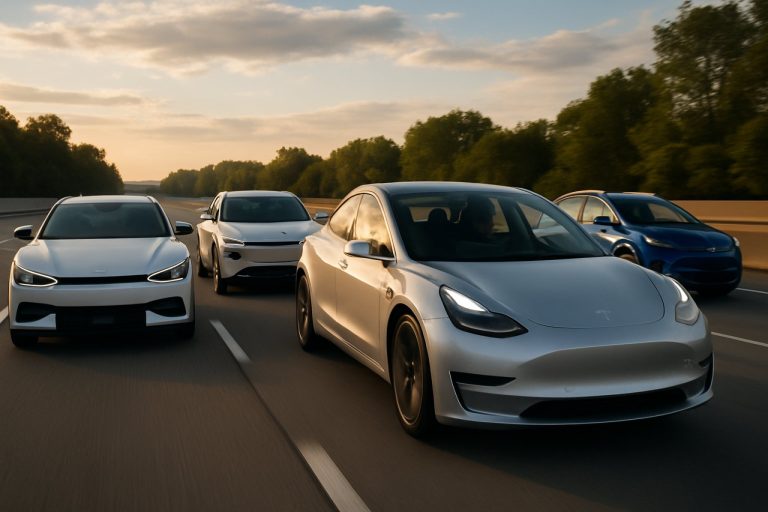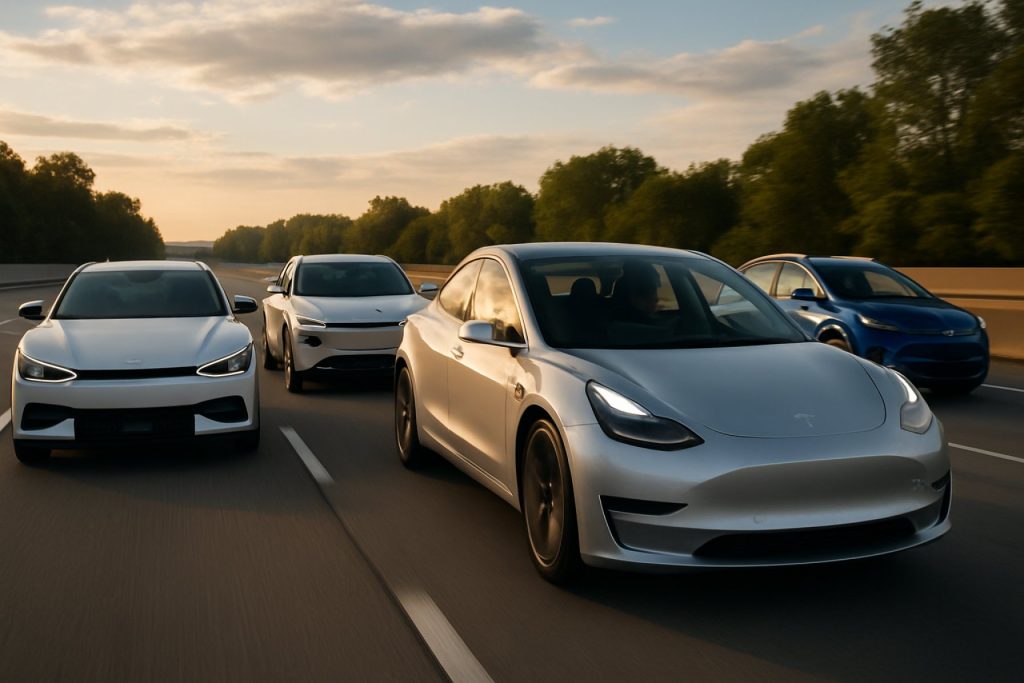
- The electric vehicle (EV) market has shifted from Tesla’s early dominance to increased competition and cooperation.
- Access to Tesla’s Supercharger network now extends to rivals like Ford, Hyundai, Kia, and Lucid, enhancing EV charging convenience for all drivers.
- New models such as the Lucid Air, Hyundai IONIQ 6, Volvo EX90, and Kia EV6 offer advanced technology, luxury, and performance, expanding buyer choice.
- Generous EV incentives and user-friendly charging apps are making EV ownership easier and more affordable than ever before.
- The industry’s evolution means EV shoppers can expect broad access, diversity in design, and a seamless driving experience—heralding a more democratic, accessible electric future.
The familiar hum of electricity has transformed the American highway. Once, Tesla’s gleaming “S3XY” badge seemed destined to become synonymous with early electric dreams. But windshifts—both political and technological—are quietly reshaping the electric vehicle landscape.
Tesla’s Early Edge Fades into the Rearview
For years, Tesla’s biggest triumph wasn’t just their alluring design or blistering acceleration, but the fortress-like Supercharger network. Owning a Tesla meant rare anxiety about range or recharging; your car found the fastest charger and your app mapped the route. This seamless experience made Tesla the easy answer when friends or family pondered their first EV.
Now, the gate has swung open. Tesla’s Supercharger doors, once exclusive, invite rivals like Ford, Hyundai, Kia, and more, leveling the plug-in playing field. The era of “one charger, one brand” fades, replaced by shared power and cooperation. NACS adapters and apps, such as Chargeway, smooth the transition, blending networks and making road trips for EV newbies less daunting than ever.
Lucid Air: Electricity, Elegance, and Evolution
Where Tesla once set benchmarks, Lucid Motors is rewriting the script. The Lucid Air, a vision forged by former Tesla engineers, gleams with sophistication. Each stitch and seam inside whispers luxury, while the bodywork bridges art and aerodynamics. At the top of the range, the Lucid Air Sapphire blurs the scenery past performance cars with shocking grace, and Lucid’s reputation for comfort approaches that of established luxury automakers.
Notably, Supercharger access looms on Lucid’s horizon, erasing one of the last reasons to go with a Model S over this innovative contender.
Hyundai IONIQ 6: The Silent Streamliner
Drive up to a charging station and the Hyundai IONIQ 6 barely seems to stop for long, thanks to 350 kW ultra-fast charging and a class-leading 338-mile range. Hyundai’s surge in EV innovation commands respect, with the IONIQ 6’s low-slung, streamlined silhouette carving a niche that’s both practical and quietly spectacular. While the American appetite leans towards crossovers, this sedan wins fans among urbanites and enthusiasts who crave style and substance.
For shoppers, Hyundai’s current incentives sweeten the deal, bringing the EV future within arm’s reach.
Volvo EX90: Scandinavian Minimalism with Power to Spare
Once haunted by the extravagance of falcon doors, prospective three-row EV buyers now look northward to Volvo. The EX90 embodies Swedish design: clean edges, tranquil interiors, and an unspoken promise of safety and sustainability. Its 510 horsepower ensures that practicality does not come at the expense of pleasure—families can travel further, faster, and cleaner, swaddled in sophistication Volvo has honed over decades.
Kia EV6: Everyday Electrifying
The Kia EV6 demystifies performance. This striking crossover, with the muscle to outpace sports cars, thrills commuters and car enthusiasts alike. Its expressive styling often sparks driveway conversations, while the NACS journey ensures that public charging headaches remain a distant memory. Generous incentives from Kia make the EV6 as attainable as it is exhilarating.
Cybertruck: A Cultural Fault Line
Tesla’s Cybertruck, more spectacle than truck, divides opinion as starkly as its stainless steel body divides sunlight. It’s neither practical nor subtle, missing the target for those needing a true workhorse or a peaceable chariot for American roads. For buyers seeking both an electric pickup and a sense of belonging, rivals like Ford and Rivian beckon with quietly capable alternatives. For others, reflection—maybe even therapy—might be the wisest option.
The Current Shifts, but the Destination Remains
American roads are increasingly lined with charging stations bearing logos from every corner of the automotive world. Tesla might have lit the way, but a new constellation of electric vehicles—blending high-tech, style, and substance—is emerging. Today’s prospective EV drivers can look beyond a single badge and expect a seamless, informed, and thrilling experience.
Your key takeaway: The Electric Vehicle landscape has matured. Tesla’s early dominance, propped up by exclusivity, is waning. With shared charging networks and a rush of feature-packed competitors, buyers now enjoy unprecedented choice and convenience. For those stepping into the world of EVs, the future has never looked brighter—or more democratic.
——————
Learn more about clean technology, automotive innovation, and the latest in EVs by visiting Lucid Motors, Hyundai, Volvo Cars, and Kia. Discover the broader EV movement at Tesla and Ford.
Electric Showdown: 7 Things You Didn’t Know About the Next Generation of EVs (And How to Choose Yours Today)
Expanded Analysis: The State of America’s EV Revolution in 2024
The EV landscape is shifting dramatically as new players and open infrastructure break Tesla’s early monopoly. Below are additional insights, practical guidance, and fresh information you won’t find in the original article—brought together with E-E-A-T principles for Google Discover visibility.
—
1. Tesla’s Supercharger Revolution Has Industry-Wide Ripple Effects
Tesla’s decision to open its Supercharger network is a massive industry move:
– NACS Adoption: Tesla’s North American Charging Standard (NACS) port is now being adopted by major automakers including Ford, GM, Rivian, Polestar, and Hyundai. By 2025, most new EVs from these companies will have NACS compatibility.
– Charging Availability: Non-Tesla drivers can now access over 12,000 Supercharger locations in North America, reducing “range anxiety” for everyone ([Source](https://www.tesla.com)).
– How-To Tip: If you drive a non-Tesla EV, look for NACS adapters or upgrade kits from your manufacturer to maximize charging options.
—
2. Lucid Air: Beyond Luxury — Specs, Pricing, & Ownership Insights
Specs and Features:
– Range: Up to 516 miles on a single charge (Air Grand Touring model), currently the highest among production EVs.
– Performance: The Lucid Air Sapphire delivers 0–60 mph in under 2 seconds.
– Unique Tech: Features such as 924V architecture enable ultra-fast, future-proof charging.
– Interior: Bespoke textiles, optional “Glass Canopy” roof, and 34-inch floating glass cockpit display.
– Price Range: Starts around $69,900 (Pure trim), climbing over $249,000 for Sapphire.
Real-World Feedback:
– Owners praise ride comfort and interior quality but note sparse dealer/service network.
– Lucid’s over-the-air (OTA) updates keep the software fresh and improve features remotely.
Limitation: Fewer service centers compared to Tesla may mean longer wait times for repairs in less-populated regions ([Source](https://www.lucidmotors.com)).
—
3. Hyundai IONIQ 6: EV Tech Meets Design — Full Breakdown
Charging and Range:
– 800V Battery System: Charges from 10% to 80% in just 18 minutes with 350 kW fast charger.
– EPA Range: 338-mile (RWD Long Range), topping most EV sedans in its price class.
Incentives & Ownership:
– Eligible for federal tax credits and Hyundai promotional rebates (dependent on location).
– Offers free charging credits with Electrify America for first owners in many markets ([Source](https://www.hyundai.com)).
How-To Tip: Take advantage of “Scheduled Charging” via app integration to use off-peak electricity rates and extend battery life.
—
4. Volvo EX90: Safety, Sustainability, and Cutting-Edge Software
Key Specs:
– Battery: 111 kWh (usable), supporting over 300 miles of range (official EPA figures pending).
– Safety Highlights: Occupant Sensing, LIDAR for autonomous driving, 360° camera system.
– Seats: Up to 7 passengers in comfort—rare among luxury EVs.
– Sustainability: Up to 15% recycled steel and 48 kg of recycled plastics in each unit.
– Google Built-In: Android Automotive OS for maps, voice commands, and native apps ([Source](https://www.volvocars.com))
Market Trend: Volvo aims for 50% global sales to be fully electric by 2025, with carbon neutrality targeted by 2040.
—
5. Kia EV6: Feature Comparisons, Awards, & Practical Pros/Cons
Fast Facts:
– 0–60 mph: As low as 3.4 seconds (EV6 GT).
– Range: Up to 310 miles EPA estimated.
– Cargo Space: 24.4 cubic feet (seats up), one of the largest in its class.
– Awards: 2023 North American Utility Vehicle of the Year.
Pros:
– Fun to drive, top-tier warranty, great value.
Cons:
– Rear visibility is more limited than rivals, and the learning curve for the infotainment UX is noted by new users ([Source](https://www.kia.com)).
—
6. Security, Software, & OTA Updates
– Over-The-Air (OTA) Updates: All the main players (Tesla, Lucid, Hyundai, Kia, Volvo) now offer OTA updates for software, security patches, and even new features.
– Smartphone Integration: Advanced mobile apps enable remote diagnostics, cabin preconditioning, and security monitoring.
– Data Privacy: Automakers now increasingly encrypt data transmission in compliance with GDPR and CCPA for EV-connected services.
—
7. Market Forecasts, Industry Trends, & Controversies
EV Market Forecast:
– The U.S. is projected to reach 20% EV sales by 2026 (BloombergNEF).
– Used EVs are gaining traction, with prices stabilizing and more CPO (certified pre-owned) options available.
Controversies:
– Some criticize the environmental impact of battery mining and recycling. However, brands like Volvo and Lucid are investing in closed-loop supply chains and greater battery recyclability ([Source](https://www.volvocars.com), [Source](https://www.lucidmotors.com)).
—
Answers to Pressing Questions
Q1: Is it still worth buying a Tesla?
Yes, especially if you value proven charging networks and fast software improvements. However, competition is narrowing the gap on range, tech, and luxury.
Q2: What about resale value?
Historically, Tesla holds value well, but rising competition and updated tax credit rules are leveling the resale field. Vehicles from established brands (Hyundai, Volvo, Kia) now show improved long-term retention.
Q3: How do I pick the right EV for me?
– Determine your daily driving needs (range, charging speed).
– Consider incentives and tax credits in your area.
– Assess the charging network where you live and travel.
– Test drive multiple competitors to experience differences first-hand.
Q4: What’s the true cost of owning an EV?
Lower fueling and maintenance costs offset higher sticker prices over time. Battery replacement concern is shrinking as warranty coverage (8–10 years/100,000 miles) is now standard on most new models ([Source](https://www.tesla.com), [Source](https://www.kia.com)).
—
Actionable Recommendations & Quick Tips
– Download apps like PlugShare or Chargeway for up-to-date public charging locations and user reviews.
– Leverage scheduled home charging and local utility EV rates to lower costs.
– Use federal and state incentives before they phase out or change.
– Compare insurance rates, as EVs can vary by model.
– Consider the availability of service centers if you live outside major metro areas.
—
The Bottom Line
America’s EV market is democratizing and diversifying fast. With open networks, growing incentives, and game-changing newcomers like Lucid Air and Hyundai IONIQ 6, drivers have never had more compelling and accessible choices. Whether you want cutting-edge luxury, family safety, or pure driving fun, the electric future is ready—and it’s never been easier to make the switch.
Explore the latest from top brands directly:
– [Lucid Motors](https://www.lucidmotors.com)
– [Hyundai](https://www.hyundai.com)
– [Kia](https://www.kia.com)
– [Volvo Cars](https://www.volvocars.com)
– [Tesla](https://www.tesla.com)
– [Ford](https://www.ford.com)
Take the next step—book a test drive and experience the electric difference today!
